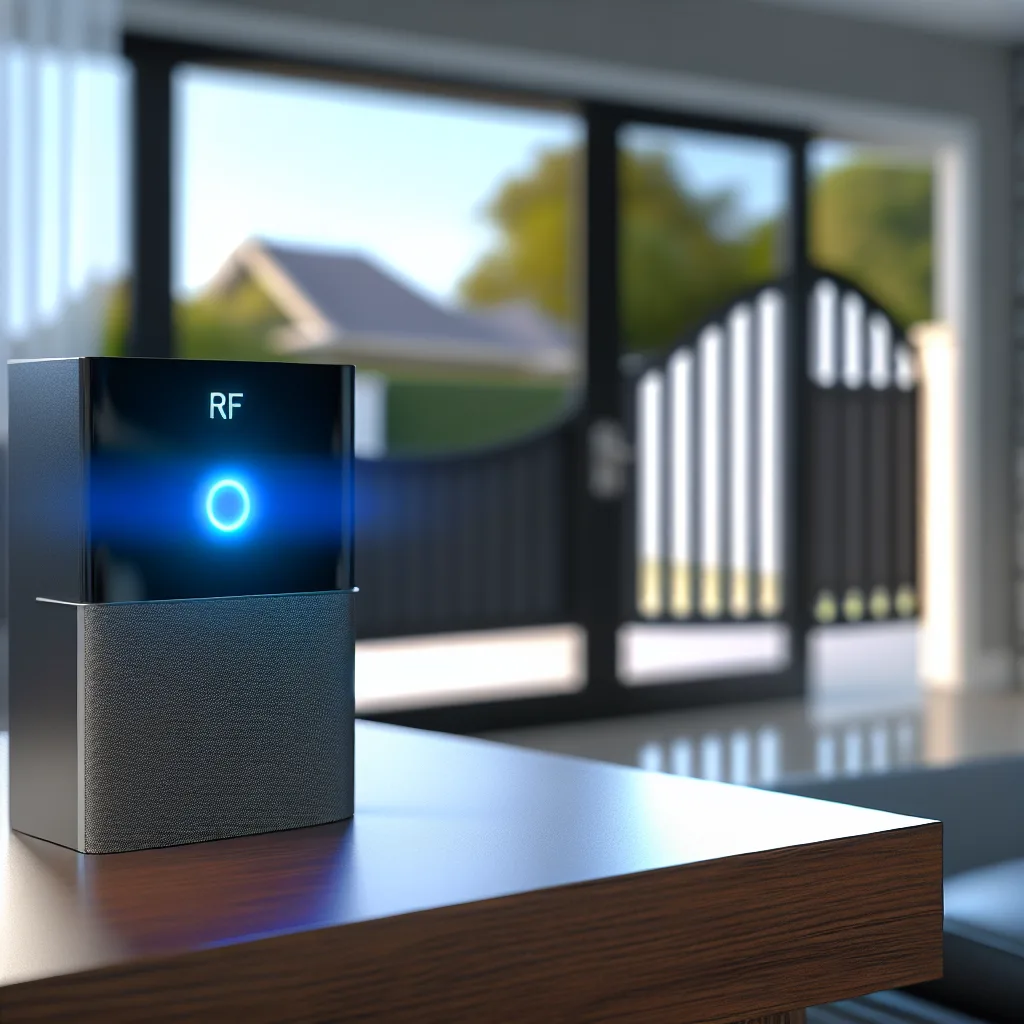A simple guide to creating your own smart gate opener without replacing everything.
I have a confession to make. For years, I’ve been living a double life. Inside my house, everything is smart. Lights turn on with my voice, the thermostat knows when I’m home, and my coffee maker starts brewing before I’m even out of bed. But the second I pull into my driveway, I’m thrown back into the dark ages, fumbling for a clunky plastic remote to open my electric gate. It felt disconnected. I wanted a true smart gate opener experience, but the thought of replacing the entire gate motor system was daunting and expensive.
If you’re in the same boat, with a simple gate that works perfectly fine with its 433MHz remote, I’ve got some great news. You don’t have to rip everything out. You can absolutely bridge that gap between your old gate and your modern smart home.
Understanding Your “Dumb” Remote and Your Smart Gate Opener Goal
So, what’s the deal with that little remote? Most non-smart devices like garage doors, gate openers, and ceiling fans use a simple radio frequency (RF) signal to communicate, with 433MHz being one of the most common frequencies. Think of it as a one-way conversation: you press the button, the remote shouts a command, and the gate listens. It’s simple and effective.
Your smart home, on the other hand, runs on protocols like Wi-Fi, Zigbee, or Z-Wave. These are sophisticated, two-way networks. Your phone sends a signal to a smart plug, and the plug can report back that it’s on, how much energy it’s using, and more. They’re speaking completely different languages.
The goal is to find a translator—a device that can listen to your smart home’s language (Wi-Fi or Zigbee) and then speak your gate’s language (433MHz RF).
The Magic Translator: Finding an RF Bridge
This is where the magic happens. The device you’re looking for is often called an “RF Bridge” or “IR/RF Blaster.” It’s a small hub that connects to your Wi-Fi network just like any other smart device. Its special skill is that it can also learn and replicate radio frequency signals.
Here’s how it works:
- You plug it in and connect it to your smart home app (like Tuya, Smart Life, or Google Home).
- You put the bridge into “learning mode.”
- You hold your original gate remote next to it and press the button.
- The bridge “records” the 433MHz signal and saves it as a digital button in your app.
Now, you can tap that button on your phone from anywhere in the world, and the RF bridge will blast the correct signal to your gate, telling it to open. Some popular and reliable devices that do this are the BroadLink RM4 Pro or the Sonoff RF BridgeR2.
A Crucial Warning: Fixed Codes vs. Rolling Codes
Before you get too excited and click “buy,” there’s a critical detail you need to check. Gate remotes use two main types of security codes:
- Fixed Code: This is the simpler type. The remote sends the exact same code every single time you press the button. Most universal RF bridges are designed to learn these without any issues.
- Rolling Code (or Hopping Code): This is a much more secure system. The remote and the receiver are synchronized, and the code changes every single time you use it. This prevents thieves from capturing your signal and replaying it to open your gate.
Unfortunately, most consumer-grade RF bridges cannot learn rolling codes because they can’t predict the next code in the sequence.
How do you find out which one you have? The best way is to check the manual for your gate opener or look up the model number online. Sometimes, the manufacturer’s website will have this information in their product specifications. If you see terms like “Security+,” “Code Hopping,” or “Rolling Code,” you’ll need to find a specialized bridge that explicitly supports it, which can be more difficult.
Creating Your True Smart Gate Opener System
Once you’ve confirmed you have a fixed-code system and have your RF bridge in hand, the fun part begins. After you’ve taught the bridge your remote’s signal, you can integrate it into your smart home ecosystem just like any other device.
This opens up a world of possibilities:
- Voice Control: “Hey Google, open the front gate.”
- Geofencing: Set up an automation so your gate opens automatically when your phone detects you’re a block away from home.
- Scene Integration: Create a “Welcome Home” scene that opens the gate, turns on your entryway lights, and adjusts the thermostat all with a single tap.
It’s a small project that took me less than an hour, but the convenience has been incredible. No more searching for that remote, no more replacing tiny batteries. I finally have the fully integrated smart gate opener I always wanted, and my old, reliable gate got to come along for the ride.
